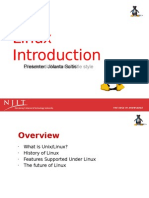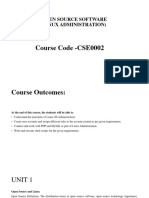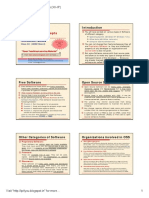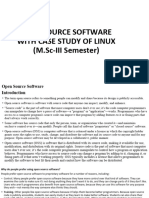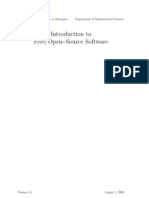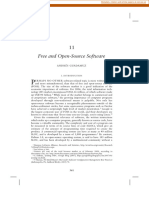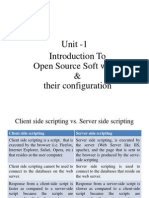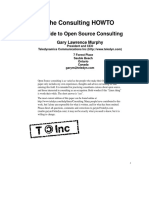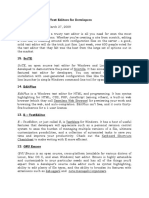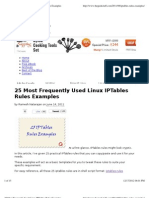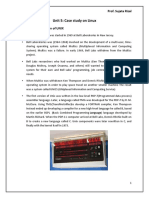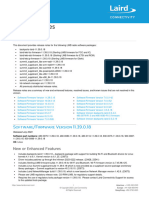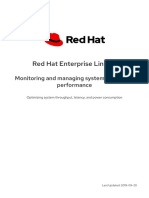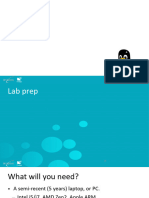0% found this document useful (0 votes)
55 views21 pagesOpen Source Software (OSS)
Open source software (OSS) provides an alternative to proprietary software that is freely modifiable and redistributable. OSS has characteristics like allowing users to easily upgrade and modify source codes. It is categorized based on cost and permission to modify, with free/open source software giving users full freedom over the software. OSS is predicted to capture 50% of the software infrastructure market within 5 years and become a significant player in consumer devices. Linux is a widely used open source operating system that runs on many hardware platforms and has over 160 distributions like Debian, Ubuntu, and Fedora.
Uploaded by
Nasr MeftahCopyright
© Attribution Non-Commercial (BY-NC)
We take content rights seriously. If you suspect this is your content, claim it here.
Available Formats
Download as PPT, PDF, TXT or read online on Scribd
0% found this document useful (0 votes)
55 views21 pagesOpen Source Software (OSS)
Open source software (OSS) provides an alternative to proprietary software that is freely modifiable and redistributable. OSS has characteristics like allowing users to easily upgrade and modify source codes. It is categorized based on cost and permission to modify, with free/open source software giving users full freedom over the software. OSS is predicted to capture 50% of the software infrastructure market within 5 years and become a significant player in consumer devices. Linux is a widely used open source operating system that runs on many hardware platforms and has over 160 distributions like Debian, Ubuntu, and Fedora.
Uploaded by
Nasr MeftahCopyright
© Attribution Non-Commercial (BY-NC)
We take content rights seriously. If you suspect this is your content, claim it here.
Available Formats
Download as PPT, PDF, TXT or read online on Scribd
/ 21




